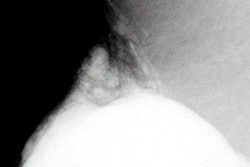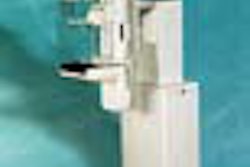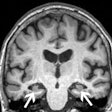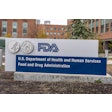Advocates of accreditation standards for radiologic technologists breathed a sigh of relief last week when the Consumer Assurance of Radiologic Excellence (CARE) bill was reintroduced in the U.S. House of Representatives.
Rep. Heather Wilson (R-NM), along with a bipartisan cadre of four co-sponsors, introduced H.R. 1011 on March 13. CARE advocates hope the legislation will not only raise the quality of radiographic images, but also reduce patients’ exposure to radiation.
"The lack of uniform standards nationwide for operators of medical imaging and radiation therapy equipment represents little-known risk to patients," Wilson said in a statement. "Accurate diagnosis and effective treatment can be provided only when personnel are property educated in anatomy, technique, equipment operation, and radiation safety."
Initially the bill covered radiographers and nuclear medicine technologists. In its latest incarnation, the bill’s scope was broadened to include all personnel who perform, plan, and deliver radiographic services.
"The goal is to assure that patients have properly trained personnel providing imaging and therapies," said William Uffelman, general counsel and director of public affairs for the Society of Nuclear Medicine in Reston, VA. "We changed the language to base the legislation on what a person is doing, rather than what they’re called."
Rep. Rick Lazio (R-NY) first introduced the CARE bill in September 2000. The original proposal was championed by the Alliance for Quality Medical Imaging and Radiation Therapy, a coalition of 16 organizations, including the American Society of Radiologic Technologists, the Society of Nuclear Medicine, and the American College of Radiology. The Joint Review Committee on Education in Cardiovascular Technology (JRC-CVT) recently joined the alliance as well.
The bill stalled during Lazio’s run against Hillary Clinton in the New York senate race, and eventually died when the 106th session of Congress adjourned late last year. When the new Congress convened in January, CARE proponents found new sponsors in Wilson, Rep. Mike Doyle (D-PA), Rep. John Duncan, Jr. (R-TN), Rep. Lane Evans (D-IL), and Rep. Nick Rahall (D-WV).
The CARE bill must now make its way through the committee process. Wilson serves on the House Energy and Commerce Committee, which has jurisdiction over health, finance, telecommunications, and energy issues. The bill will be heard in the health subcommittee of the Energy and Commerce Committee, of which Wilson is also a member.
Lobbyists will continue with their advocacy efforts. Last spring, 80 members of the ASRT descended on Washington, DC to lobby their representatives in support of CARE; this spring, the ASRT is sending 100 RTs to the capitol for the same purpose. Each technologist will meet with his or her state's representatives to raise awareness of the national disparity in licensing requirements and the hazards of allowing undertrained technologists to perform radiographic procedures.
"We feel this situation endangers patients. Medical imaging exams are used to diagnose disease, and if the film isn’t of high quality, there’s the chance that it could be misread by the physician and the diagnosis could be missed or wrong," said Ceela McElveny, director of public relations for Albuquerque, NM-based ASRT.
CARE is an effort to amend 1981’s Consumer-Patient Radiation Health and Safety Act, which directed the Department of Health and Human Services to establish minimum standards for the education and credentialing of RTs.
Because the 1981 act is voluntary, however, compliance has been spotty. Only 35 states license radiographers, only 28 states license radiation therapists, and only 21 states license nuclear medicine technologists. Among states that have implemented licensing laws, regulations vary widely, making a federal program crucial, according to McElveny.
"Some states have good laws, but some have laws that are so weak that patients aren’t really protected," McElveny said. "This bill would establish a minimum standard: two years of schooling in a radiologic sciences program, and credentialing by a recognized agency after graduation."
In states that have not enacted laws (including Alabama, Alaska, Georgia, Idaho, Kansas, Michigan, Missouri, Nevada, New Hampshire, North Carolina, North Dakota, Oklahoma, Pennsylvania, South Dakota, and Wisconsin), personnel can often administer radiologic procedures after just a few hours of on-the-job training. The CARE bill creates a powerful incentive for states to comply: Those that do not meet the minimum standards risk losing Medicare and Medicaid reimbursement for radiologic procedures.
By Kate Madden YeeAuntMinnie.com contributing writer
March 23, 2001
Related Reading
JRC-CVT joins CARE bill alliance, March 22, 2001
U.S. election mess affects radiology bills, November 14, 2000
Bill mandating technologist standards introduced in House, September 28, 2000
ASRT says Lazio will continue to sponsor CARE Act, May 26, 2000
Technologists travel to Washington, DC, in bid to spur on licensing bill, April 11, 2000
Lobbying effort builds for mandatory tech licensure, March 3, 2000
Click here to post your comments about this story in our technologists discussion group. Please include the headline of the article in your message.
Copyright © 2001 AuntMinnie.com



















